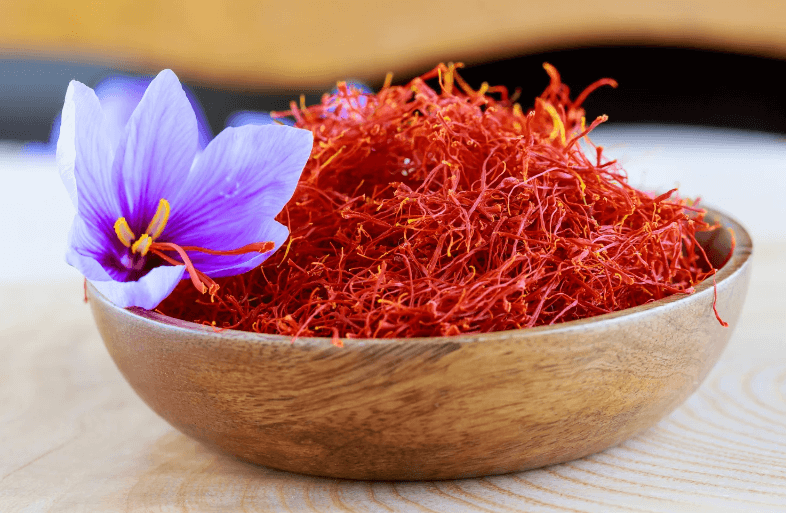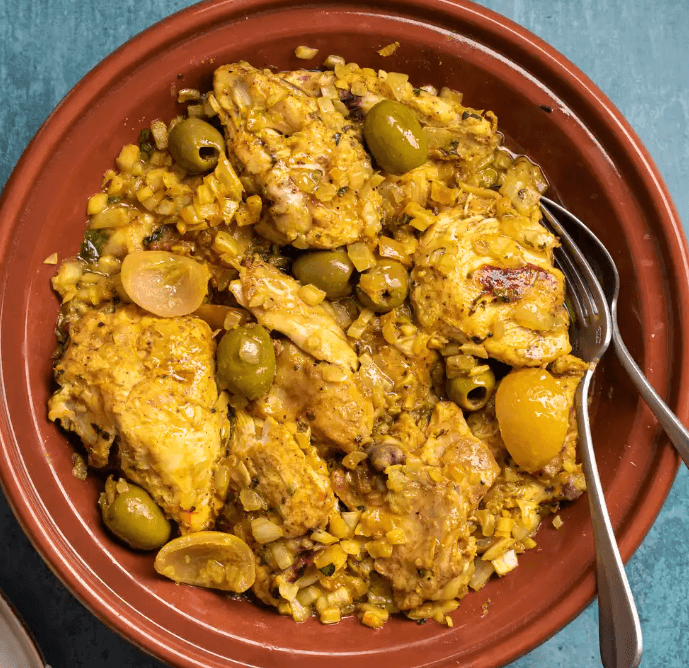
🌈 Introduction: The Golden Wonder of Nature
Saffron (مسترزين in Arabic, Safran in French) is more than just a spice; it’s a story woven through centuries of trade, medicine, and flavor. Revered as the most expensive spice by weight, saffron is prized not only for its distinctive taste and rich color but also for its powerful health benefits. Sourced from the stigma of the Crocus sativus flower, saffron is an ancient treasure that continues to thrive in modern wellness and cuisine.
🌍 Origin and Historical Significance
Saffron is believed to have originated in Iran over 3,000 years ago, with some scholars tracing it back even further to the region of Kashmir. Ancient civilizations from the Persians to the Greeks and Romans valued saffron not just as a dye or fragrance, but as a healing agent. Cleopatra reportedly bathed in saffron-infused water to enhance her beauty, while Hippocrates used it as a remedy for colds and stomach issues.
Its high value made saffron a currency in ancient trade routes. The spice reached Europe through Arab traders and quickly became a staple in medicinal and culinary applications across the continent.
❤️ Healing Benefits of Saffron (Backed by Healing Spices and Science)
Dr. Bharat Aggarwal’s book Healing Spices highlights saffron as a potent natural remedy. Here are some of its most celebrated health benefits:
🩸 1. Mood Enhancer and Antidepressant
Studies have shown that saffron can significantly improve symptoms of mild to moderate depression. It influences serotonin levels in the brain, helping uplift mood naturally.
Reference: A 2013 meta-analysis in Journal of Integrative Medicine concluded that saffron was more effective than placebo and similar in effectiveness to antidepressant medications.
💪 2. Powerful Antioxidant Properties
Saffron contains crocin, crocetin, safranal, and kaempferol—all potent antioxidants. These compounds help protect your cells from oxidative stress and inflammation.
💆♂️ 3. Boosts Libido and Sexual Function
Saffron has been used traditionally as an aphrodisiac. Clinical studies confirm its positive impact on erectile dysfunction and sexual desire, particularly in men.
🪑 4. Supports Eye Health
Saffron has shown promising effects in improving vision in patients with age-related macular degeneration (AMD). Crocin improves oxygen delivery to the eyes.
🤎 5. May Help with Alzheimer’s and Cognitive Function
Some research indicates saffron may help slow cognitive decline and improve memory in Alzheimer’s patients due to its antioxidant and anti-inflammatory effects.
🤾 6. Cancer Prevention Potential
Crocin and other compounds in saffron have demonstrated anti-cancer properties in laboratory studies by inhibiting the growth of certain cancer cells.
🍽️ Culinary Uses and Tips
Saffron is a superstar in the kitchen, used to elevate both savory and sweet dishes. Its earthy, slightly sweet flavor pairs beautifully with rice, seafood, poultry, and even desserts.
Tips for Using Saffron:
- Soak saffron threads in warm water, milk, or broth for at least 10 minutes before adding to recipes. This releases the full color and flavor.
- Use sparingly: a pinch goes a long way.
- Store saffron in a cool, dark place in an airtight container to preserve its potency.
🌊 Saffron in Traditional Healing
In Ayurvedic and Persian medicine, saffron is used for:
- Treating menstrual discomfort
- Enhancing complexion
- Aiding digestion
- Improving respiratory health
In Morocco, saffron tea is a treasured remedy for fatigue and anxiety, often brewed with herbs like chamomile or anise.
🍳 Recipe 1: Moroccan Saffron Chicken Tagine
Ingredients:
- 1 whole chicken (cut into pieces)
- A pinch of saffron threads
- 1 onion, finely chopped
- 2 cloves garlic, minced
- 1 tsp ground ginger
- 1 tsp turmeric
- 1 preserved lemon, chopped
- 1/2 cup green olives
- 3 tbsp olive oil
- Salt and pepper to taste
Instructions:
- Soak saffron in 1/4 cup of warm water.
- In a large pot or tagine, heat olive oil and sauté onions and garlic.
- Add chicken pieces and brown lightly.
- Add ginger, turmeric, salt, pepper, saffron water, and preserved lemon.
- Cover and simmer for 45 minutes.
- Add olives and cook for another 15 minutes.
- Serve hot with crusty bread or couscous.

🥛 Recipe 2: Saffron Milk (Golden Elixir for Relaxation)
Ingredients:
- 1 cup whole milk (or almond milk)
- 4-5 saffron threads
- 1 tsp honey
- A pinch of ground cardamom (optional)
Instructions:
- Warm the milk in a saucepan.
- Add saffron threads and simmer for 5 minutes.
- Stir in honey and cardamom.
- Let sit for a minute before sipping.
This is a perfect bedtime drink that promotes relaxation and calm.
❓ FAQs About Saffron
Q: Why is saffron so expensive?
A: It takes about 75,000 saffron flowers to produce just one pound of saffron. Each stigma must be hand-harvested, making it extremely labor-intensive.
Q: Can saffron be taken daily?
A: Yes, but in small amounts. About 30 mg per day is considered safe for most adults.
Q: Does saffron have any side effects?
A: When taken in normal amounts, it’s safe. Large doses can cause nausea or dizziness.
📊 Final Thoughts
Saffron is a crown jewel among healing spices. Its radiant color, rich history, and profound health benefits make it a must-have in your kitchen and wellness routine. Whether you’re cooking a luxurious dish or simply sipping on saffron milk, you’re indulging in centuries of tradition and healing.
Stay golden, stay healthy!
Let us know in the comments if you’ve used saffron before. What’s your favorite recipe or remedy? ✨
